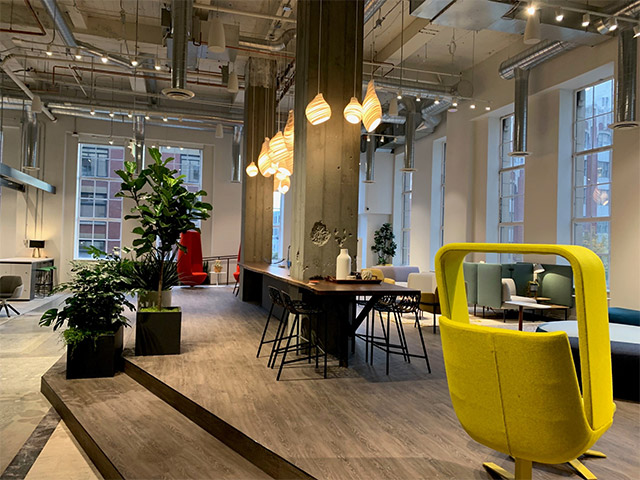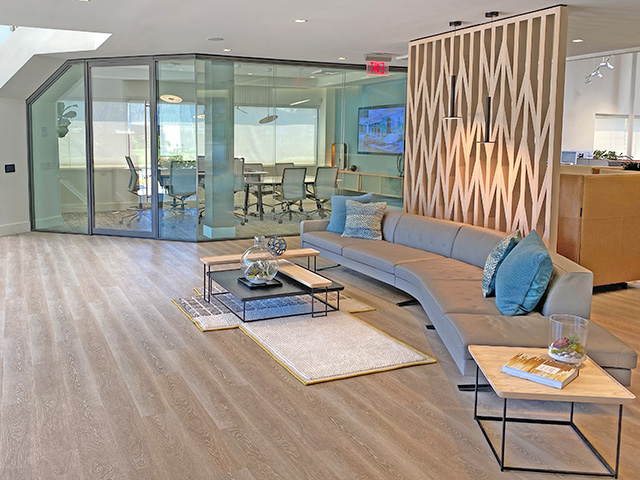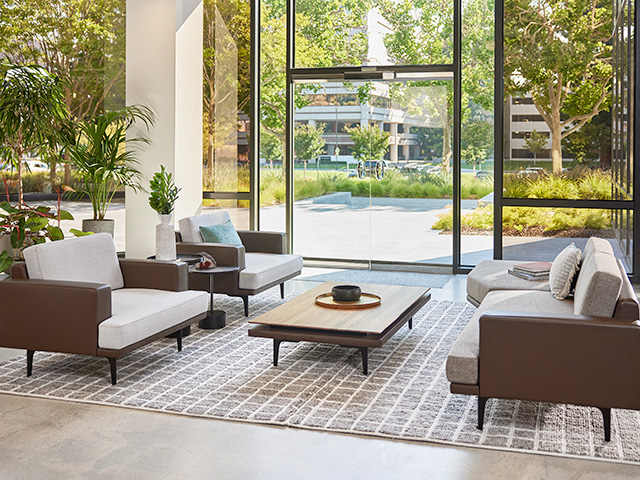
In the intricate dance of workplace dynamics, acoustics plays a crucial role in orchestrating a harmonious and productive environment. This comprehensive guide aims to delve into the intricate details of sound—its characteristics, behaviors, and the profound impact it can have on the workspace. By mastering the art of acoustics, businesses can transform their offices into spaces that foster effective communication, minimize distractions, and prioritize employee well-being.
Understanding Sound:
Sound is not just an abstract concept; it’s a dynamic force that influences how we experience our surroundings. It manifests through characteristics such as pitch, frequency, volume, and amplitude.
1. Pitch and Frequency: Pitch, measured in Hertz (Hz), determines the high or low tones of sound. Understanding the frequency of sound, ranging from the high-pitched whir of a dental drill to the lower tones of a passing bus is crucial. In the workspace, recognizing the pitch of human speech (85 Hz to 255 Hz) becomes instrumental for optimal communication.
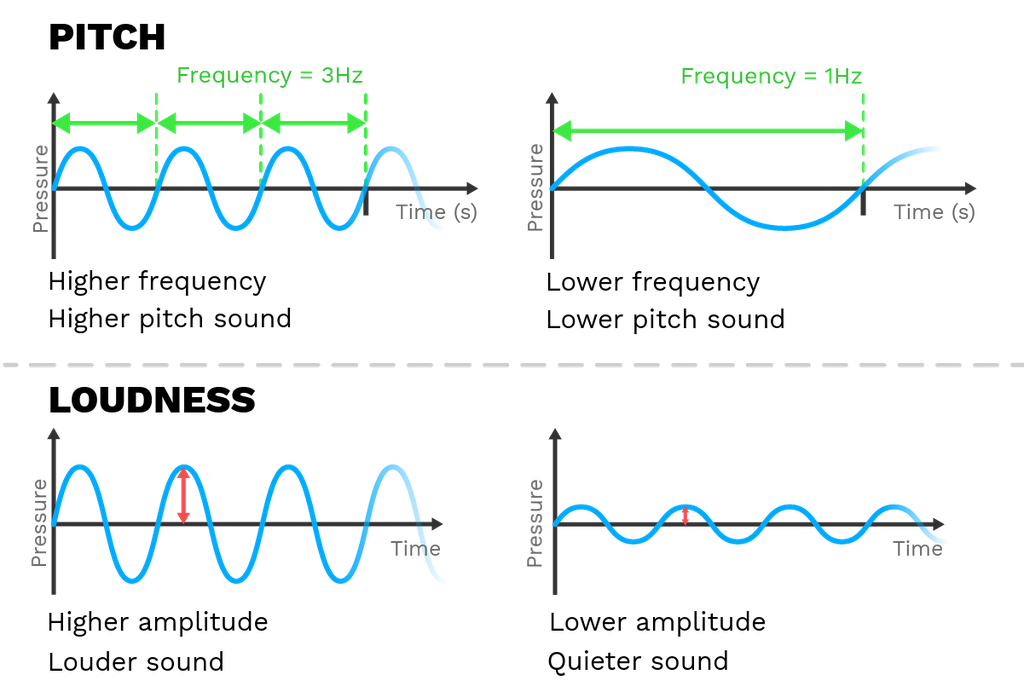
2. Volume and Amplitude: Volume, linked to amplitude, measures the energy of sound waves in Decibels (dB). It’s not merely about meters but how we perceive loudness. Managing amplitude is critical, as prolonged exposure to high-amplitude sounds can lead to hearing damage. A workspace’s acoustic design must consider the amplitude of speech sounds to create an environment conducive to well-being.
How Sound Travels:
Sound waves navigate through space, impacting various surfaces in their path. Understanding how sound travels—via airborne, structural, and flanking transmission—helps us comprehend the mechanics of soundproofing.
1. Reflection: Sound reflects off hard surfaces like drywalls, creating a lively yet potentially unpleasant ambiance. Proper acoustics can mitigate excessive reflection, ensuring a balanced auditory experience.
2. Dissipation: Irregular surfaces disperse sound waves, reducing their intensity through dissipation. This is key in improving sound quality within a room and enhancing the overall acoustic environment.
3. Absorption: Soft surfaces, like curtains, absorb sound, converting energy. Implementing sound-absorbing materials reduces the intensity of sound, fostering a more comfortable auditory experience.
4. Transmission: Some sound travels through solid surfaces, such as walls or floors, facilitating movement from one area to another. Understanding transmission is crucial for effective soundproofing.
5. Flanking: Flanking occurs when sound escapes through alternative paths, such as outlets or edges of walls, where soundproofing may be less effective. Addressing flanking is essential for comprehensive acoustic control.
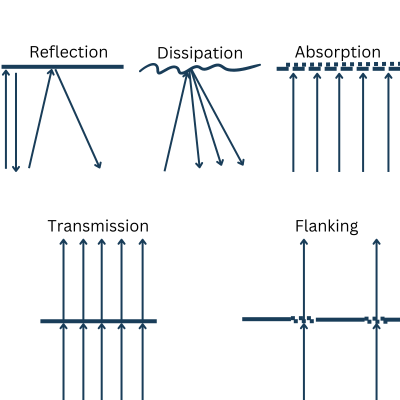
Reverberation in the Workspace:
The time sound takes to decay in a room, known as reverberation, is critical. Recommended reverberation times differ for various spaces, emphasizing the importance of tailored acoustics:
- Office: 0.75 seconds
- Collaboration room: 0.60 seconds
- Auditorium: 1.50 to 2.00 seconds
- Café or cafeteria: 1.00 second
Impact of Sound Travel:
Acoustics significantly influences speech intelligibility and privacy in workspaces. Excessive reverberation and echoes can impede communication, leading to the Lombard Effect, where speakers raise their voices. Clear speech intelligibility enhances productivity and fosters a positive working atmosphere.
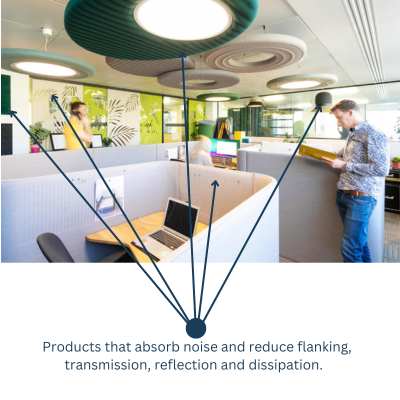
Speech Privacy:
Inadequate sound isolation allows speech to travel freely, compromising privacy. Solutions like partitions, panels, return silencers, and sound masking systems effectively address speech privacy concerns, creating confidential spaces for employee interactions.
Mitigating Excessive Noise:
Excessive noise contributes to stress, fatigue, and reduced focus. Optimal acoustic solutions involve sound-absorbing materials, diffusers, and strategic space planning. By prioritizing acoustics, businesses create environments that enhance concentration, collaboration, and job satisfaction.
Conclusion:
Harmonizing workspaces through mastering acoustics is an art that requires careful consideration of sound characteristics, behaviors, and their impact. By understanding the intricacies of sound and implementing effective acoustic solutions, businesses can create dynamic workplaces that prioritize employee well-being, productivity, and a positive work culture.
To understand more about acoustics in the workplace, download the Haworth Acoustic Design Guide.
FOR MORE INFORMATION, PLEASE CONTACT
Michelle Sample
marketing@peoplespace.com

